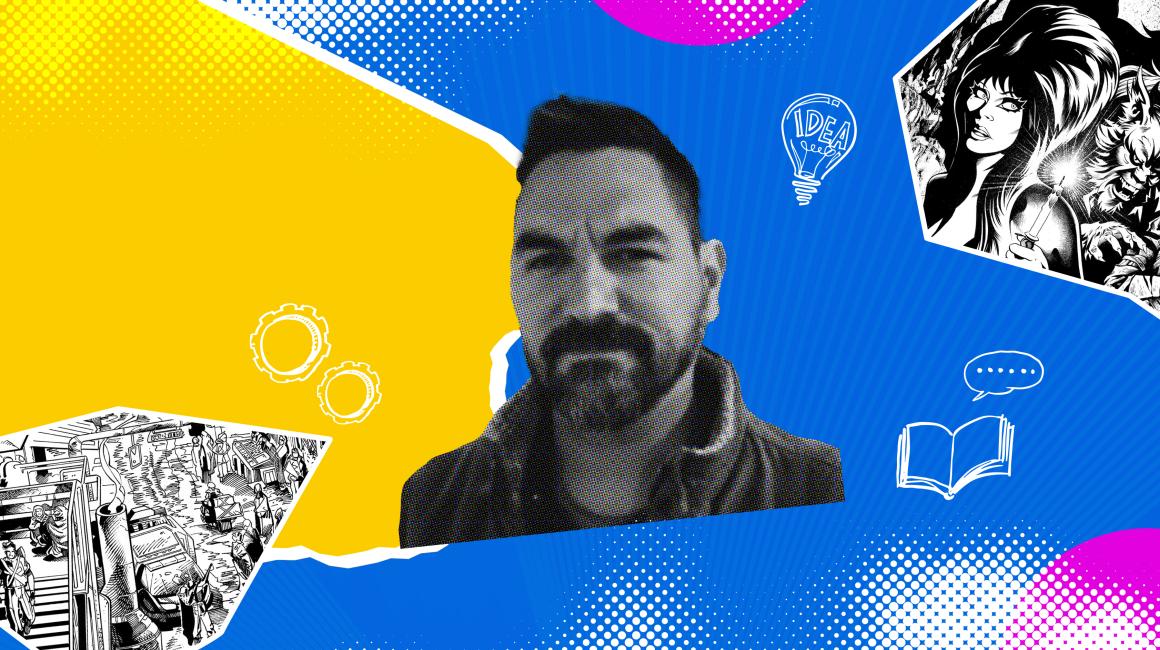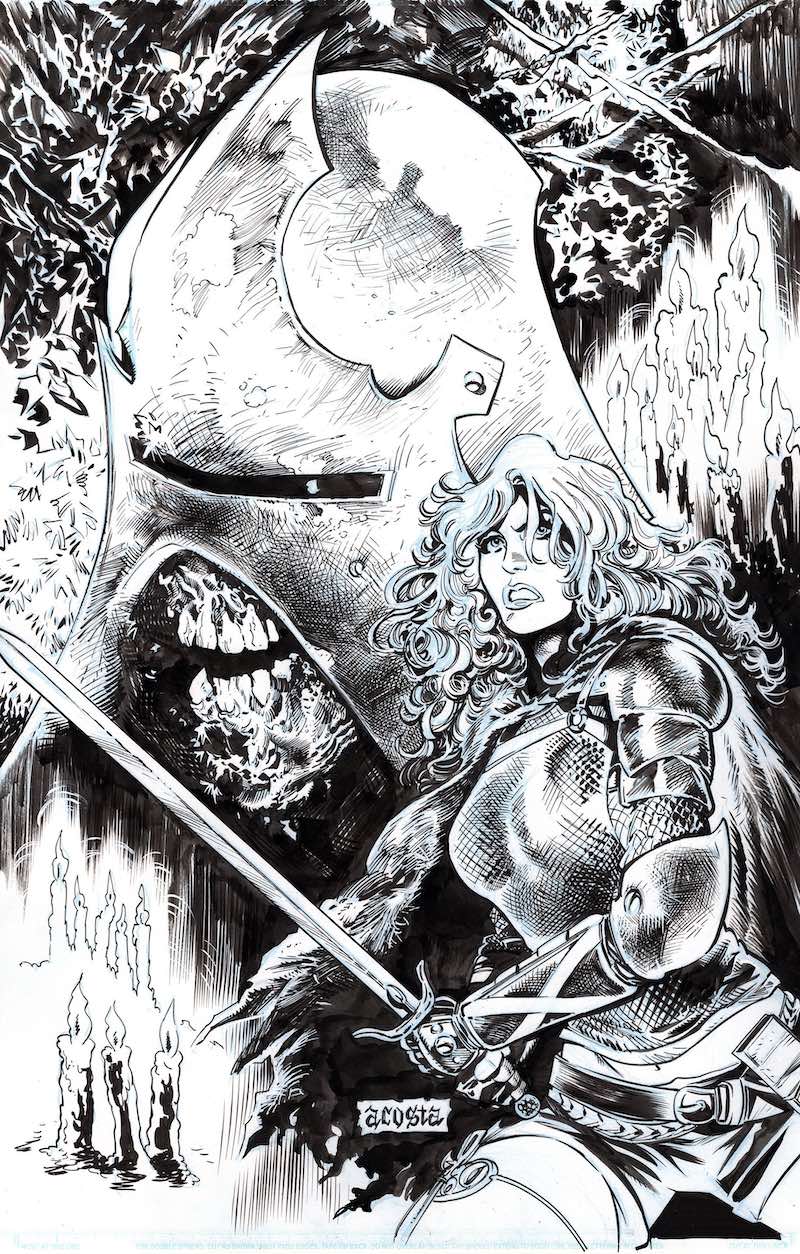Acosta graduated from UM-Dearborn in 2006 with a degree in English literature. While some may be surprised he did not focus on art in college, Acosta says his education was crucial to his career as an illustrator. "When you're doing comics, the emphasis is on storytelling," he says. "You'd think it's all about drawing, but that's only one part of it and not even the most important part. You don't need to be a master illustrator to be a comic strip or comic book artist, but you need to have the storytelling skills."
As part of his storytelling curriculum, Acosta says he also took a lot of film classes at UM-Dearborn and came to see comic book scripts as akin to screenplays. "I don't think readers understand this because when they see the credits on a comic book, the writer comes first and then the penciler. So they kind of attribute it like a novel: the writer is the author, and then the artist is just drawing it. But in truth, it's more like 'screenplay by so and so, directed by Steven Spielberg.'"
"I use those skills every day, what I learned in the film and then the English lit," Acosta says. There is a lot of storytelling the artist brings to a comic that is not in the script, he says, including body language, how a character uses props, and how the characters are positioned in relation to each other. "That's part of the visual storytelling language that the penciler has to do," he says. "And I learned all of that at UM-Dearborn."
He also notes that even though he might have loved to study art, many of his friends who attended art school ended up unsatisfied because at the time comics were not a respected medium and instructors would not accept comics artwork for assignments. Now, UM-Dearborn and other colleges and universities have curriculum focused on graphic novels, providing students a broader range of opportunities to study the craft of comics.



